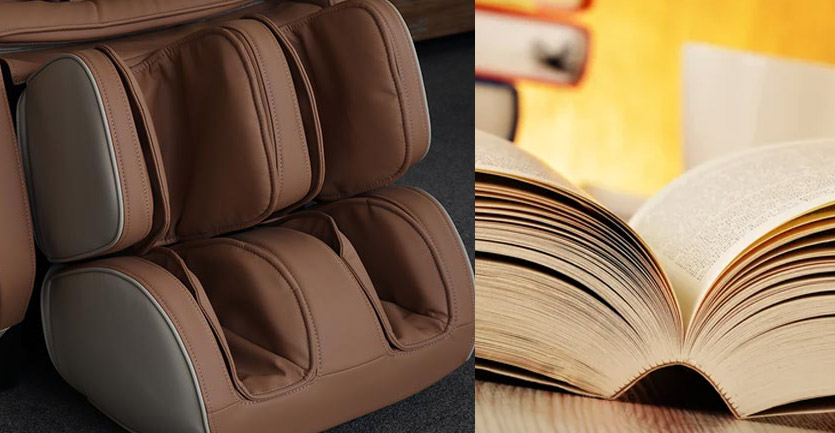When shopping for a home massage chair, the amount of tech talk that salespeople may throw your way can be overwhelming.
Before you head in-store, make sure you’re familiar with these common massage chair terms so you can be sure you’re comparing apples to apples in your search for the perfect massage chair for your home.
2D Massage Chair
2D or two-dimensional refers to the directions the massaging rollers in the backrest can move. 2D means they can move in two dimensions: up and down, plus side to side (or left & right).
3D Massage Chair
3D or three-dimensional refers to the directions the massaging rollers in the backrest can move. 3D means they can move in three dimensions: up and down, side to side, plus in and out to provide depth and simulate firmer massage pressure.
4D Massage Chair
4D or four-dimensional refers to the movement of the massaging rollers in the backrest. With up and down, side to side, and in & out, some suppliers refer to the movement speed as a fourth dimension.
It is worth noting that most 2D and 3D massage chairs do have some level of speed adjustment, and the term “4D” can often be used as a marketing technique to make a more expensive chair sound as though it has more features.
Airbags
Most massage chairs have two main devices for performing massage techniques, the rollers and the airbags. Usually located around the shoulders and forearms, waist, calves and feet, the airbags inflate and deflate around a muscle group to apply a gentle squeezing pressure. The pressure level is often adjustable between three to five intensity levels.
Manual Controls
For those that want to customize their massage experience further than the automatic programs or modes, massage chairs have varying levels of manual controls available. Using the remote control, users can adjust specific settings such as back roller position, width or speed – back roller technique (tapping, kneading, shiatsu, etc) – footrest massage on/off – airbags on or off – airbags intensity – and more depending on the mode.
Manual controls are best used in conjunction with a user guide or manual as there can be a lot of options to remember, and not all massage chairs use the same remote control.
Massage rail or massage track
The rollers in a massage chair travel up and down a railway type track in the backrest. This track is referred to as the massage rail, or massage track.
The length of this massage rail will determine how suitable a massage chair is for each user, depending on their height. For a person 6’0” and taller, a massage rail of at least 125-130cm is recommended for the best fit & experience.
Memory / Save Function
As there can be many options for customising a massage program, it can sometimes be hard to remember the specific settings when you have the massage chair running just how you like it. Some models will have a memory function to save the current settings to memory so that they can be loaded back up at the press of a shortcut button.
Programs or Modes
Massage chairs have a set of automatic or pre-defined programs/modes which are a group of settings that make up a specific massage experience that can be started with the press of a shortcut button. Some automatic programs or modes can include; back & waist mode, neck & shoulders mode, full body mode, lower body mode, relaxation mode, etc. The automatic programs will run for a set time limit, usually 20 or 30 minutes.
Rollers
The other main device for performing massage techniques is the rollers. Located in the backrest, the rollers are pairs of wheels that move up and down a railway-type track to apply pressure to the back, working either side of the spine. The rollers can move up and down, side to side and perform tapping or pulsing movements to simulate different massage techniques such as shiatsu, kneading or tapping.
Settings
Settings refers to any options a massage chair has for adjusting the massage experience. Depending on the chair, the settings could include roller speed, width or position - airbag intensity - massage technique (tapping, kneading, shiatsu, etc) – recline position – footrest position – and more.
SL Rail
“SL” rail refers to the shape of the massage track, the SL version forms a combined S and L shape when viewed from the side. This shape allows the rollers to move along the shape of the human spine more comfortably, for a natural feeling massage.
Zero Gravity Recline
Zero gravity recline (or just zero gravity) is a reclining position where the user is laying near-horizontal. This elevates the feet higher than the heart, and reduces pressure on joints to introduce a weightless sensation that enhances the massage experience.





